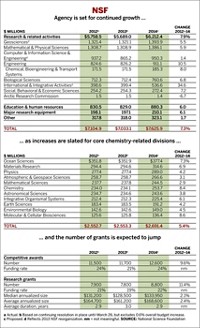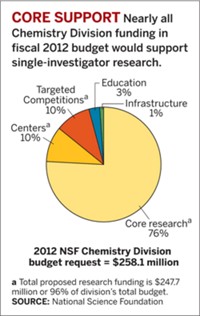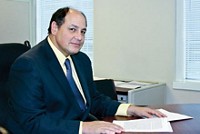Advertisement
Grab your lab coat. Let's get started
Welcome!
Welcome!
Create an account below to get 6 C&EN articles per month, receive newsletters and more - all free.
It seems this is your first time logging in online. Please enter the following information to continue.
As an ACS member you automatically get access to this site. All we need is few more details to create your reading experience.
Not you? Sign in with a different account.
Not you? Sign in with a different account.
ERROR 1
ERROR 1
ERROR 2
ERROR 2
ERROR 2
ERROR 2
ERROR 2
Password and Confirm password must match.
If you have an ACS member number, please enter it here so we can link this account to your membership. (optional)
ERROR 2
ACS values your privacy. By submitting your information, you are gaining access to C&EN and subscribing to our weekly newsletter. We use the information you provide to make your reading experience better, and we will never sell your data to third party members.
Environment
NSF Chemistry Division Proposes Realignment
Restructuring would do away with traditional program labels
by Rudy M. Baum
March 24, 2009
NSF Division of Chemistry Director Luis Echegoyen announced a proposed sweeping realignment of the division's chemistry programs at the foundation's ACS Town Hall meeting on Monday evening in Salt Lake City.
He also discussed the infusion of cash NSF will receive from the Obama Administration's economic stimulus package, although he said at the outset that "most of what I am at liberty to talk about on the stimulus, you already know."
The goal of the proposed changes, Echegoyen said, is to realign the Chemistry Division "to guarantee that the very best projects in research, education, training, and infrastructure development are supported and to anticipate and respond to new developments in chemistry."
The new structure would abandon the traditional program delineations such as the Organic & Macromolecular Program and the Physical Chemistry Program. In their place would be eight new programs in the following areas: chemical synthesis; chemical structure, dynamics, and mechanisms; chemical measurement and imaging; theory, models, and computational methods; environmental chemical sciences; chemistry of life processes; chemical catalysis; and macromolecular, supramolecular, and nanochemistry. The family of programs housed in Integrated Chemistry Activities would be retained.
"This represents a substantial departure from the current structure," Echegoyen noted, adding that the only word that survives from the old structure to the new is "theory."
Comments, positive and negative, can be submitted to chemplans@nsf.gov. "Often, when we ask for input," Echegoyen noted, "the people who are critical tend to be more vocal. If you like this plan, we'd like to hear from you so we have a representative set of comments."
Of the $3 billion NSF is slated to receive in stimulus funds, $2 billion will be dedicated to Research & Related Activities grants. The majority of the Chemistry Division's share will go to fund proposals the division already has in-house, Echegoyen said. Another $300 million will go to the Major Research Instrumentation Program, and $200 million will go to the Academic Research Infrastructure Program. Grant solicitations for MRI and ARI will go out shortly, Echegoyen said.






Join the conversation
Contact the reporter
Submit a Letter to the Editor for publication
Engage with us on Twitter